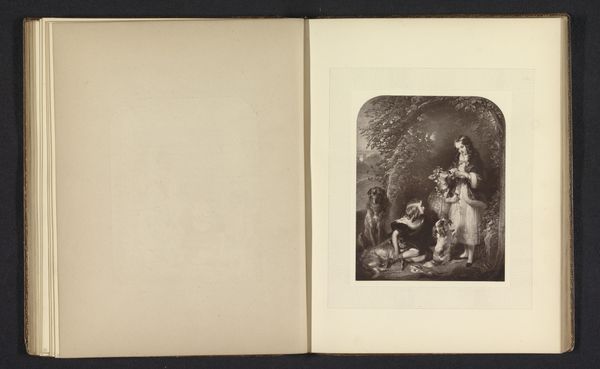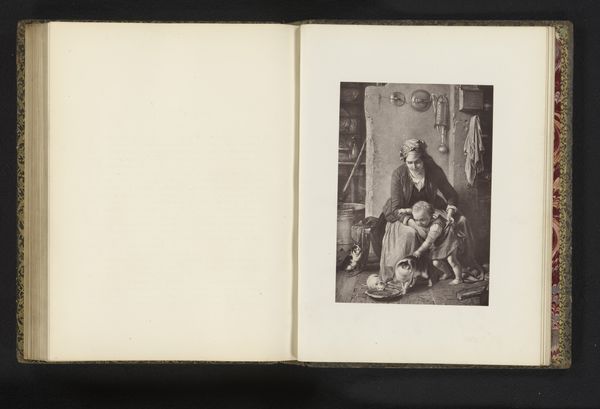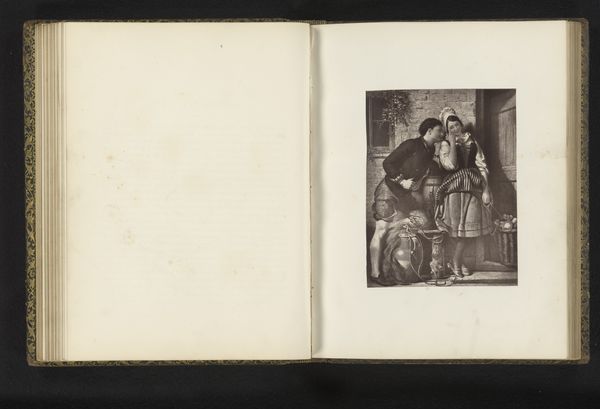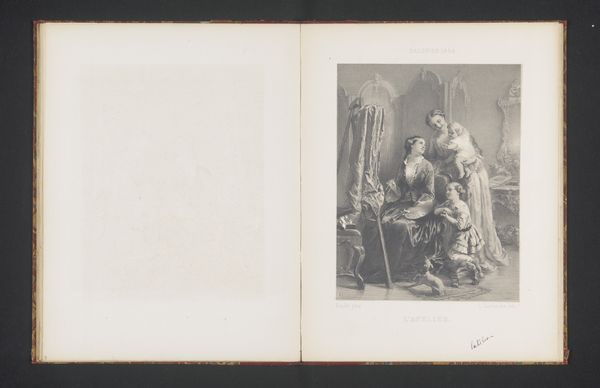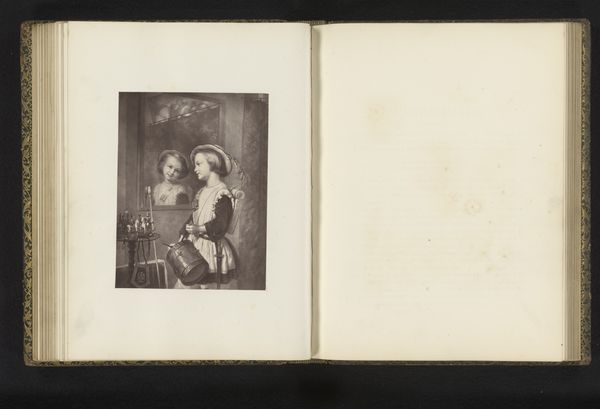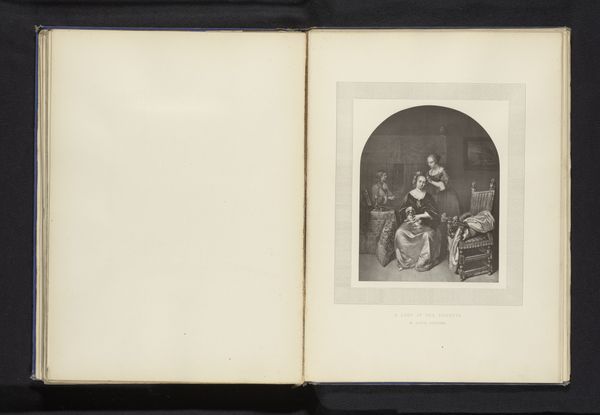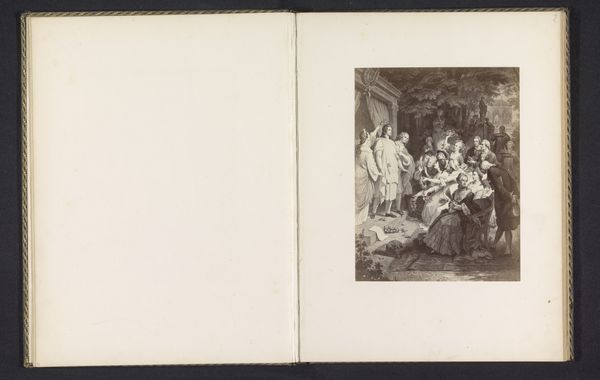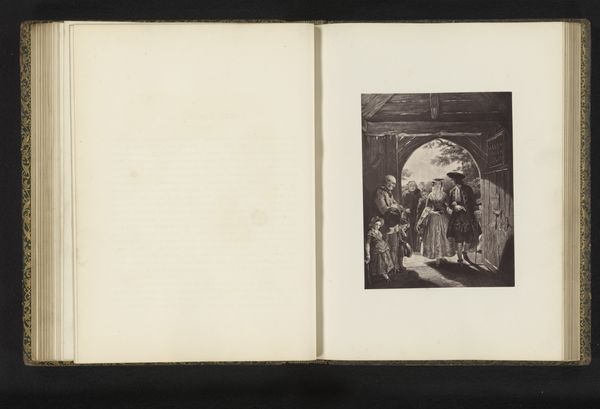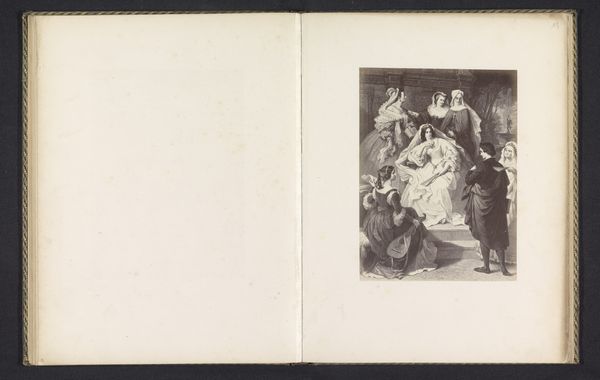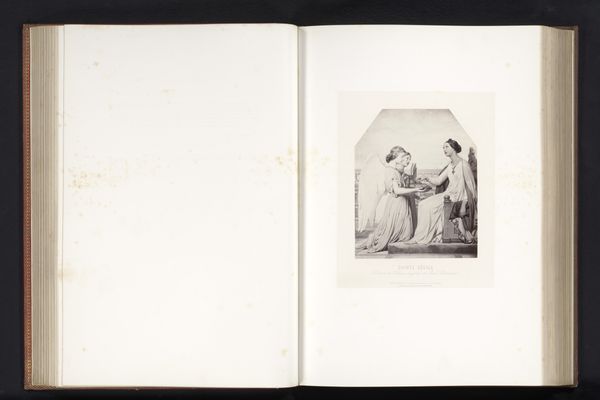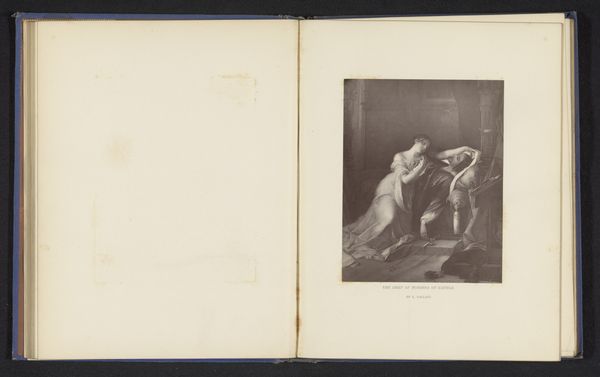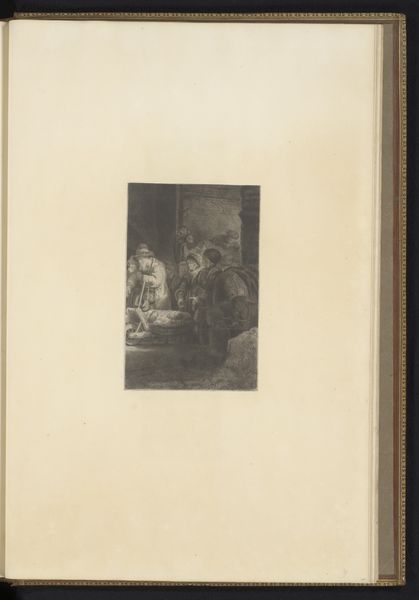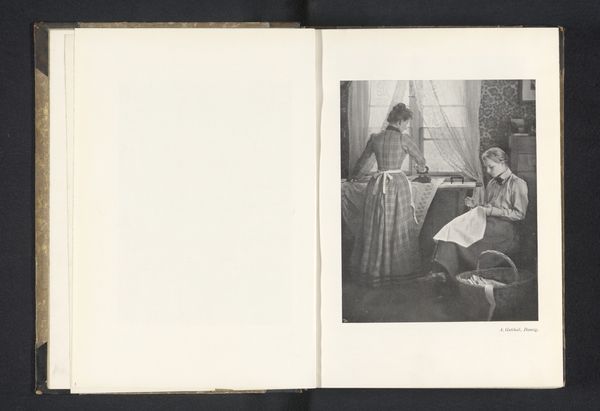
Fotoreproductie van een gravure naar het schilderij Prayer door James Sant before 1871
0:00
0:00
Dimensions: height 156 mm, width 120 mm
Copyright: Rijks Museum: Open Domain
Editor: Here we have a photograph of a print – specifically, a photogravure of a painting called "Prayer" by James Sant. It dates from before 1871. The mother and child remind me of similar images from that period but, even knowing the name "prayer," it seems melancholy. What do you see here? Curator: Well, immediately, I consider the historical and social context. Think about the role of women in the 19th century and the expectations around motherhood and domesticity. How does that interplay with the implied religiosity of the scene? Is this image celebrating an idealized, sentimentalized vision of motherhood or perhaps, subtly critiquing the limitations placed upon women? What is it telling us about gender roles, faith, and class? Editor: So you see the artist and printer potentially raising issues or making some comment about Victorian society's norms? It looks sweet to me but, as you say, is there some kind of social critique? Is it subverting expectations? Curator: Perhaps the artist is commenting on the expectations surrounding the female gender and domestic duties, in a society where class determined identity, family position, social inclusion, and civic participation. What if the quietness in their faces conceals anxieties? Are they truly at peace, or merely performing their prescribed roles? Do you consider it important that there is nothing about a husband/father? Is his presence implied in some way? How might his absence have affected women and the working classes? Editor: It hadn’t occurred to me that there was commentary or meaning on that level. I suppose I saw it more at face value. I find the thought of those tensions adding depth. Curator: Art so often provides the means to open dialogues around historical inequalities and entrenched norms. Editor: Thank you; I appreciate how this image gives us opportunities for reflection, it really offers a window into societal values and allows critical interpretation.
Comments
No comments
Be the first to comment and join the conversation on the ultimate creative platform.
